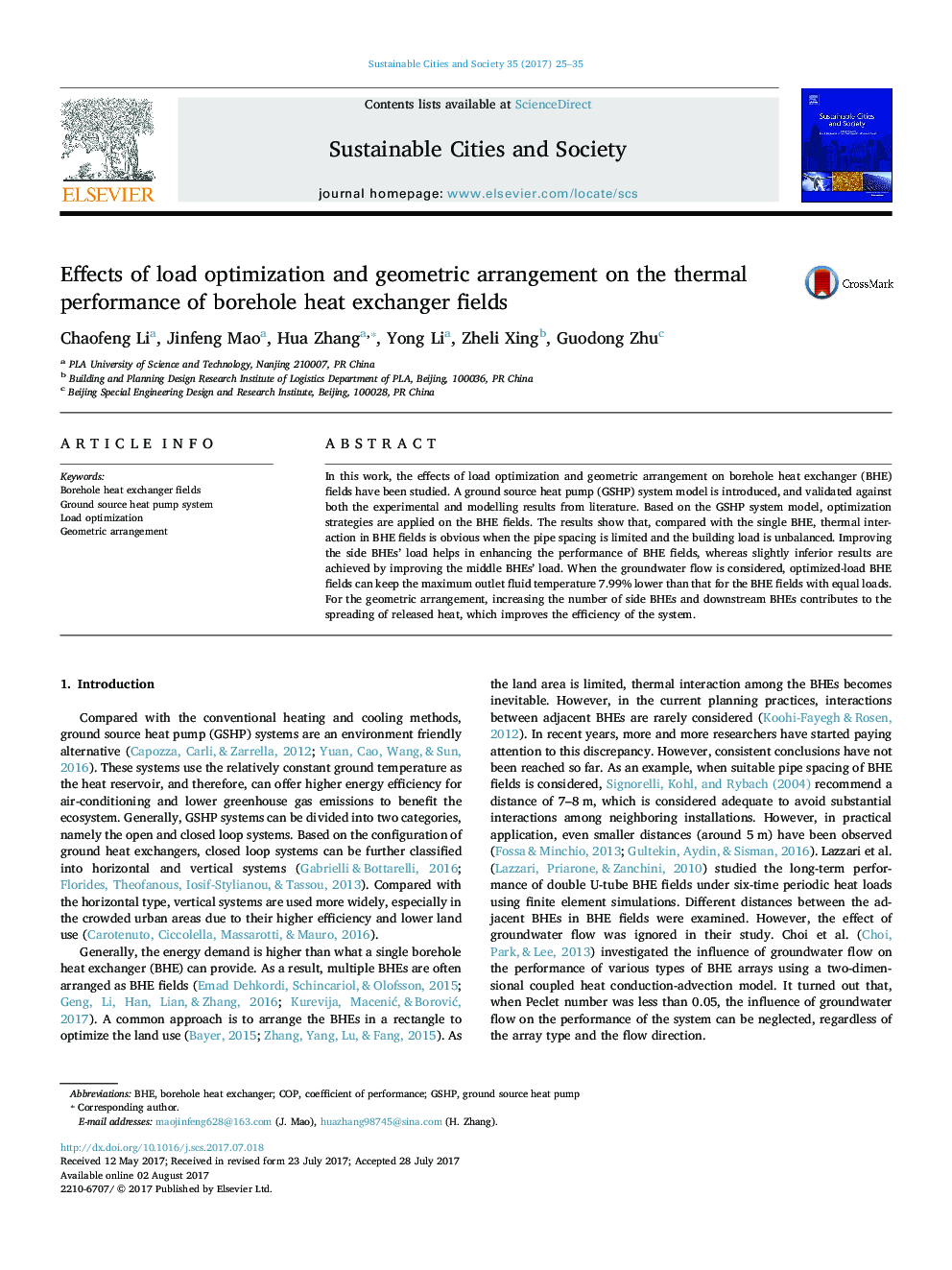| Article ID | Journal | Published Year | Pages | File Type |
|---|---|---|---|---|
| 4928076 | Sustainable Cities and Society | 2017 | 11 Pages |
Abstract
In this work, the effects of load optimization and geometric arrangement on borehole heat exchanger (BHE) fields have been studied. A ground source heat pump (GSHP) system model is introduced, and validated against both the experimental and modelling results from literature. Based on the GSHP system model, optimization strategies are applied on the BHE fields. The results show that, compared with the single BHE, thermal interaction in BHE fields is obvious when the pipe spacing is limited and the building load is unbalanced. Improving the side BHEs' load helps in enhancing the performance of BHE fields, whereas slightly inferior results are achieved by improving the middle BHEs' load. When the groundwater flow is considered, optimized-load BHE fields can keep the maximum outlet fluid temperature 7.99% lower than that for the BHE fields with equal loads. For the geometric arrangement, increasing the number of side BHEs and downstream BHEs contributes to the spreading of released heat, which improves the efficiency of the system.
Keywords
Related Topics
Physical Sciences and Engineering
Energy
Renewable Energy, Sustainability and the Environment
Authors
Chaofeng Li, Jinfeng Mao, Hua Zhang, Yong Li, Zheli Xing, Guodong Zhu,
